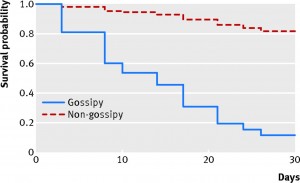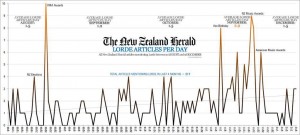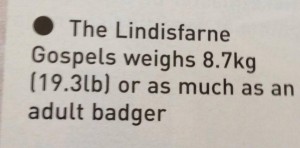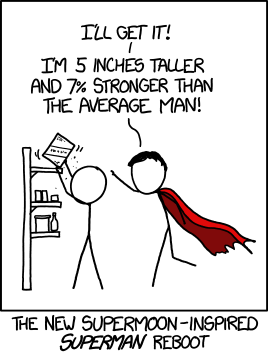Today (in NZ) is the summer solstice, the time when the sun is the highest in the sky, and the longest day. In the northern hemisphere it’s the winter solstice, the darkest day of winter.
The date of Christmas, as every school child knows, wasn’t even in theory chosen as the anniversary of a particular night when shepherds were abiding in the fields. Views differ on whether it was chosen to match the Roman solstice celebration on December 25th, or nine months after the equinox on March 25th. In either case, though, we seem to be off by a few days. Today is the solstice and nine months after the equinox, but Christmas isn’t until Thursday. Why could that be?
One possibility, advanced by German historian Heribert Illig, is that the date isn’t really 2014 this year. It’s really only 1717, so we haven’t had enough missing leap years since the year 1 CE and the Gregorian calendar is off by a few days. That is, according to Illig, the period from 614 CE to 911 CE didn’t happen. The evidence adduced for this gap, in addition to the date of Christmas, is a shortage of buildings in Constantinople (now Istanbul) in that period, and a gap in Christian theological development.
Back in consensus reality, the Phantom Time Hypothesis provides a nice illustration of how data in different fields interlocks like a crossword puzzle. For example, the times of historical eclipses and sightings of Halley’s Comet match the standard calendar, and don’t match if you assume there are three missing centuries, and the same is true of tree ring counts, and the last big eruption at Lake Taupo. And while the history of Rome and Constantinople is arguably tidier in some ways, there’s a hole blown in the middle of the Tang Dynasty, including important events such as the Battle of Talas.
So, is there a better explanation of why today isn’t Christmas? In fact, yes. When the Gregorian calendar was devised, it didn’t try to go all the way back to 1CE, which people already realised was a slightly iffy date at best. It was designed to match the Julian calendar in 325CE: the date of the Council of Nicea, when the formula for the date of Easter was agreed on (and where Nicholas of Myra, aka Santa Claus, was thrown in jail for slapping Arius during a debate)
StatsChat wishes you a happy summer or winter solstice. Try to refrain from slapping anyone, whatever the provocation.




